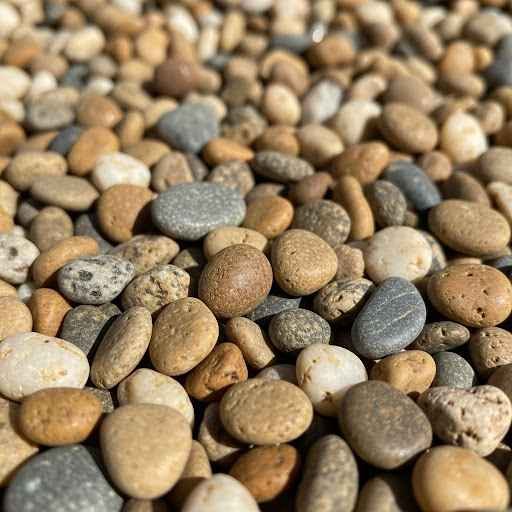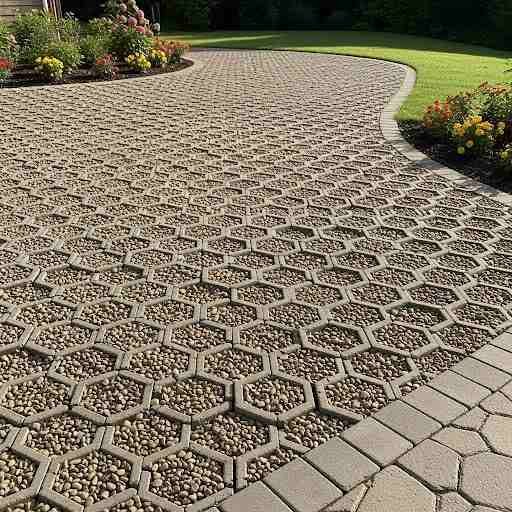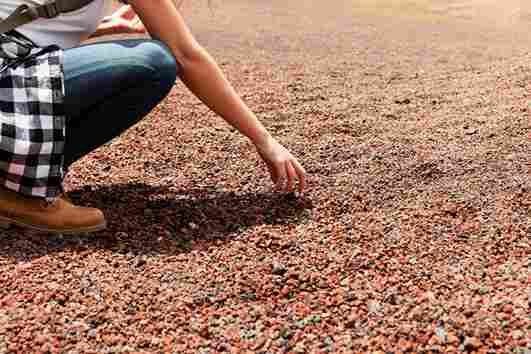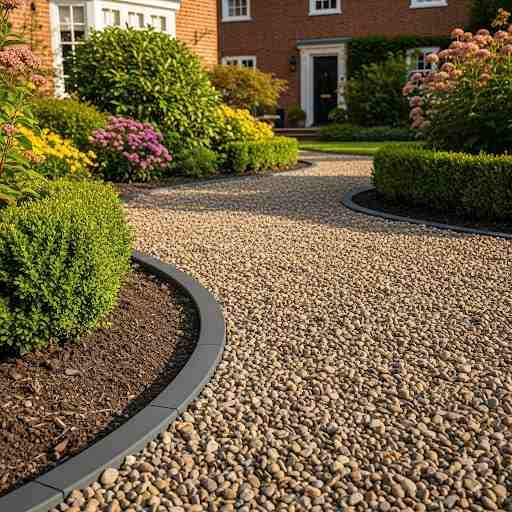Pea gravel is a popular material for various landscaping projects such as pathways, driveways, and garden beds. Its smooth texture and small, round shape make it aesthetically pleasing, but one challenge many homeowners face is keeping the gravel in place. Without proper management, pea gravel can spread, shift, or wash away over time. Fortunately, there are several ways to maintain the integrity of your pea gravel installation and ensure it stays where you want it.
What Is Pea Gravel?
Pea gravel is made up of small, rounded stones that are usually about 1/4 inch to 1/2 inch in diameter. It gets its name from the size and shape of the stones, which resemble dried peas. This gravel is available in a range of colors, including tan, gray, and brown, and is commonly used in landscaping projects for its natural appearance and ease of installation.
used in landscaping projects for its natural appearance and ease of installation.

Pea Gravel Characteristics Table
| Feature | Description |
| Size | 1/4 inch to 1/2 inch in diameter |
| Shape | Small, round, and smooth |
| Color | Tan, gray, brown, and other natural hues |
| Applications | Pathways, driveways, garden beds, decorative areas |
Due to its smooth texture, pea gravel provides a soft and comfortable surface to walk on, making it ideal for paths, patios, and decorative features. However, its small size can make it prone to shifting and spreading, which requires proper installation and maintenance.
The Benefits of Pea Gravel
Pea gravel has many advantages that make it a favorite choice for landscaping:
| Benefit | Description |
| Aesthetic Appeal | Smooth, rounded stones create an attractive, natural look |
| Drainage | Highly permeable, allows water to flow through easily |
| Low Maintenance | Minimal upkeep, no frequent repairs needed |
| Cost-Effective | Affordable compared to other materials like flagstone or concrete |
| Versatile Use | Can be used in various landscaping applications |
Installation of Pea Gravel
Proper installation is key to ensuring that pea gravel stays in place. Here’s a step-by-step guide to help with the installation process:
- Prepare the Area: Begin by marking the area where you want to install the pea gravel. Remove any grass, weeds, or debris, and ensure the ground is level. If the gravel is being installed over a large area, use a shovel to create a slight slope for water runoff.
- Lay a Weed Barrier: To prevent weeds from growing through the gravel, lay a weed barrier or landscape fabric over the prepared soil. This will also help keep the gravel in place over time.
- Edge the Area: Install edging around the perimeter of the gravel area. This can be done using materials like plastic, steel, or brick. Edging will prevent the gravel from spilling over and help contain it within the defined space.
- Add a Base Layer: For a more stable base, especially for driveways, consider laying a layer of larger gravel (like crushed stone) first. This will provide additional support and prevent the pea gravel from sinking into the ground.
- Spread the Pea Gravel: Once the base layer is in place, spread the pea gravel evenly across the surface. Use a rake to smooth it out, and make sure the gravel is level. A depth of about 2-3 inches should be sufficient for most applications.
Preventing the Spread of Pea Gravel
While pea gravel is an excellent material, it can spread or shift if not properly contained. Here are some tips to help keep it in place:
| Method | Description |
| Use Edging | Install solid borders like plastic, steel, or brick to keep gravel contained |
| Stabilize with Binding Agents | Use gravel stabilizers to keep the gravel compacted and in place |
| Create a Defined Border | Use large rocks or decorative stones to define the gravel area and prevent shifting |
Using Permeable Pavers for a Higher-Quality Pea Gravel Driveway
If you’re using pea gravel for driveway, consider combining it with permeable pavers. These pavers create a grid-like structure that helps stabilize the gravel and prevent it from shifting. The pavers allow water to flow through while keeping the gravel contained, which improves drainage and enhances the durability of your driveway. Permeable pavers also help create a more refined and stable surface for driving on.
To install, lay the permeable pavers in the desired pattern and fill the spaces between them with pea gravel. This combination provides a durable, eco-friendly, and aesthetically pleasing surface.

Permeable Pavers vs. Traditional Driveway Materials
| Material | Advantages | Disadvantages |
| Permeable Pavers + Pea Gravel | Excellent drainage, stable surface, eco-friendly | Requires proper installation for maximum effectiveness |
| Concrete | Durable, low maintenance | Poor drainage, prone to cracking |
| Asphalt | Affordable, long-lasting | Poor drainage, can soften in hot weather |
Is Pea Gravel Hard to Maintain?
One of the reasons why pea gravel is so popular is its low maintenance requirements. While it’s easy to install, it’s also relatively simple to maintain. Here are some key points to keep in mind:
| Maintenance Task | Description |
| Weed Control | Regularly check for and remove any weeds that grow through the gravel |
| Raking and Re-leveling | Use a rake to redistribute gravel and keep it level after heavy traffic or weather events |
| Washing the Gravel | Occasionally wash the gravel with a hose to keep it looking clean and fresh |
In general, pea gravel is one of the easier landscaping materials to maintain, making it a great option for homeowners who want a beautiful outdoor space with minimal upkeep.
Conclusion
Pea gravel is an excellent choice for landscaping projects due to its aesthetic appeal, drainage capabilities, and low-maintenance qualities. By following proper installation techniques and using strategies like edging, permeable pavers, and binding agents, you can keep your pea gravel in place and ensure it remains a beautiful and functional feature in your landscape for years to come.







